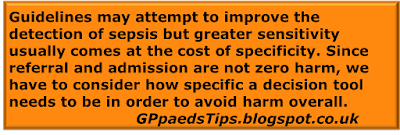As someone who occasionally mentions medi-facts that came from articles that I have long since lost track of, I was pleased to be able to re-find an article from Chest (the journal of the American College of Chest Physicians) that I have been using in both practice and teaching. It asked the question, In persistent cough, can we extrapolate an adult based approach to be used in children? (1)
The resounding answer was no.
Once again, children are shown not to be mini-adults. Paediatricians everywhere breathe a sigh of relief...
What is perhaps surprising is the number of children with a persistent cough who have evidence that pertussis is the culprit. In several studies now, the proportion has been shown to about 20-40 % of children who have been coughing for more than two or three weeks. That large number includes studies that have been done since the ramping up of vaccination campaigns. (2)
Pertussis is a significant illness which still has a mortality of around 3% in unvaccinated babies. Although less of a menace since the introduction and later improvement of vaccination programs, pertussis is still endemic. It should be suspected whenever a baby presents with an acute cough. The typical cough is paroxysmal and there are features that often make the diagnosis more obvious. Some children get the classic 'whoop' at the end of a coughing paroxysm while some will vomit or have (hopefully brief) apnoeas. It seems from the studies into persistent cough that not all pertussis is obvious acutely. Early detection reduces both symptoms and transmission. Guidance on this from the Public Health England can be found here.
So, before thinking that a persistent cough in the absence of wheeze might be asthma think: 'Could this be pertussis?' The advantages of this are:
- There is no test for asthma. There is a test for pertussis.
- As well as diagnosing the index case, you may help to identify the cause of other persistent coughs that are troubling the family and friend of this little one.
- You may save a life. If the pertussis is passed onto (for example) a new born baby this could be devastating. By recognising pertussis you may prevent transmission.
- You avoid the trap of confirmation bias. If you are tempted to 'try' an inhaler for a few weeks, you may be tricked into believing that it helped when the cough gradually resolves, as it should in time with post-pertussive cough.
Edward Snelson
@sailordoctor
Disclaimer: Of course if we're going to talk probabilities, it's probably a virus...
References
- Marchmont et al, Evaluation and Outcome of Young Children With Chronic Cough, Chest Journal, May 2006, Vol 129, No. 5
- Wang et al, Whooping cough in school age children presenting with persistent cough in UK primary care after introduction of the preschool pertussis booster vaccination: prospective cohort study, BMJ, 2014;348:g3668
- Public Health England, Pertussis factsheet for healthcare professionals














